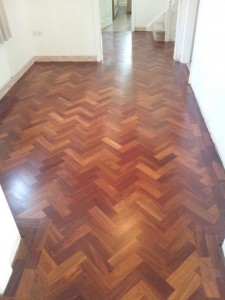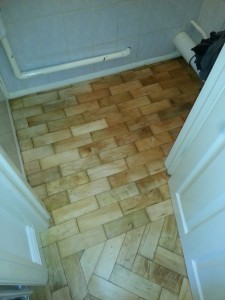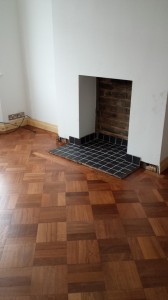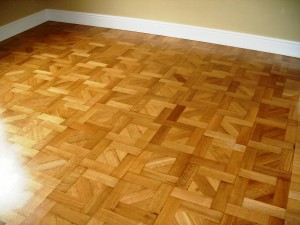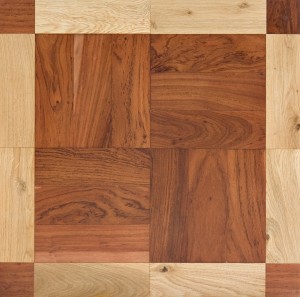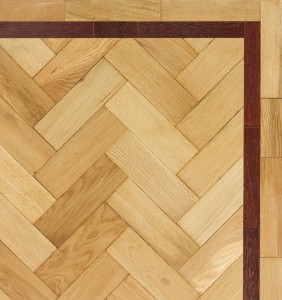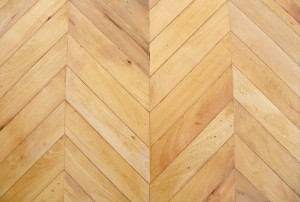There are various parquet patterns that can be achieved in your parquet project. It takes a bit of care and planning for success, but it can be done. You can have the floor fitted in the classic herringbone. But you could for example have the simpler, very modern brick pattern. Or if you want to go retro, try chequerboard. Some of the border work can also be done in a contrasting block, darker or lighter - that can be very effective - you can see examples of this on our website.
We have a few different patterns in the 'favourite' and 'more favourite' photos gallery. However to help you consider the options I have placed the various designs together on this page, courtesy of fitters or customers who have created something beautiful from reclaimed parquet:
And the time consuming but extremely clever basket weave:
Below are a couple of the options for border blocks, either using a thinner piece or a whole block to add your contrast.
The only pattern that cannot be done with a right-angled cut is a chevron. Chevron is a special cut, much less common in the UK and to be found everywhere in France, which tells you something! The chevron pattern is extremely fashionable at the moment particularly in faded tones of oak, but is not readily available in a reclaimed parquet. The panel below is one we made in our workshop but using beech, as you can see the cut is different!
So if you fancy giving a parquet design a try, we carry a good range of reclaimed blocks in stock at all times. The wood types do vary depending on what we have recently reclaimed: Oak, Maple, Pitch Pine, Sapele, African Walnut, Partridge Wood, Beech Panga Panga etc, etc.
